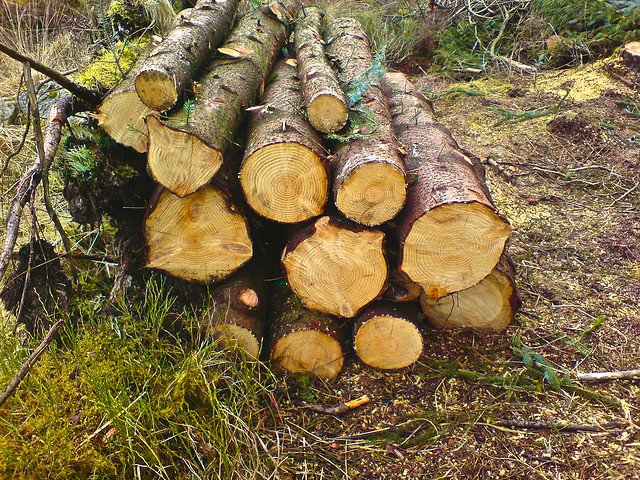
Independent MPs Rob Oakeshott and Tony Windsor announced a plan in early February to convince the government to count native forest wood-fired power stations as a renewable energy source. Their plan would mean wood-fired power would qualify for renewable energy subsidies.
Below is an “open letter of concern” to Oakeshott from 16 Australian scientists about his support for “incentives for native forest biomass burning”.
* * *
Dear Mr Oakeshott,
Your decision to support incentives for native forest-burning power stations has alarming ramifications for communities and natural ecosystems across Australia.
These include:
• The likelihood that carbon emissions will increase. In many circumstances, forest biomass emits more greenhouse gases than fossil fuels per unit of energy produced.i. Australia’s current accounting rules also mean most logging emissions are not accounted for, hiding real emissions.
• Australia’s forests are some of the most carbon dense on Earth.ii Government policy that encourages the logging and burning of these forests to produce energy will lead to significant carbon emissions that would take centuries to recover.
• Current logging regimes are not ecologically sustainable. The logging of old growth and high conservation value forests and threatened species’ habitats continues in Australia under existing regulatory regimes, and these regimes are demonstrably failing to protect environmental values.iii Biomass harvesting is likely to involve intensified logging and heightened impacts on soil and invertebrate biodiversity and other forest values.iv
• Under the “high value test” covering biomass harvesting, the majority of timber from a logging operation could still be used as feedstock. High value products may form only a small percentage of the volume of timber removed from a logging area, indirectly making biomass the primary beneficiary of harvesting, just as low-value woodchips have historically been the driver for large scale logging.
• Biomass is a dirty fuel. In the United States, leading Medical Societies and health advocacy groups have called for a ban on biomass power plants as they pose an unacceptable risk to the public’s health by increasing air pollution. Burning hundreds of thousands of tonnes of native forest will generate dangerous emissions of nitrogen oxides, particulate matter and sulphur dioxide.v
• Providing renewable energy subsidies to the logging industry will undermine opportunities for the development of clean energy technologies and could decrease funding available to clean energy technologies through the Clean Energy Fund. The cap on Renewable Energy Certificates means native forest burning power stations could displace other, less polluting and damaging forms of renewable electricity.vi
• Australians do not want energy generated from the burning of native forests supplied to their homes.vii Major electricity retailers and the National GreenPower group have also rejected native forest biomass power.viii
Australians overwhelmingly support greater native forest protection.
Mr Oakeshott, we urge you to consider seriously all the evidence and potential consequences related to your disallowance motion. It is our considered opinion that an evidence-based policy in this circumstance would retain the changes as proposed by the Multi-Party Climate Committee.
We urge you to support this sensible policy change and act to safeguard Australian communities and ecosystems.
Yours sincerely,
Professor William F Laurance
Distinguished Research Professor & Australian
Laureate
Prince Bernhard Chair in International Nature
Conservation
James Cook University, Cairns, Qld
David Milledge
MRSc (UNE)
Forest Ecologist
Suffolk Park NSW
Associate Professor Jean-Marc Hero
School of Environment
Griffith University, Qld.
Dr David Obendorf
Veterinary pathologist
Hobart, Tasmania
Dr Colette Harmsen
Field Veterinary Officer
Save the Tasmanian Devil Program
Launceston, Tasmania.
Professor Steffen Lehmann
Professor of Sustainable Design,
School of Art, Architecture and Design,
University of South Australia
Adelaide, SA.
Dr Peter McQuillan
Senior Lecturer - Honours Coordinator
School of Geography & Environmental Studies
University of Tasmania, Hobart
Professor Jamie Kirkpatrick
School of Geography & Environmental Studies
University of Tasmania, Hobart.
Professor Grant Wardell-Johnson
Centre for Ecosystem Diversity & Dynamics
School of Science
Curtin University
Perth, WA.
Dr Brian Marshall
Geologist
Leura, NSW
Dr Duncan Robin Baigent
Climate Change researcher
Bullaburra, NSW
Dr Elizabeth Murchison
Research Fellow
King’s College
University of Cambridge
United Kingdom
Dr Judy Clarke
Wildlife Biologist
Save the Tasmanian Devil Program
Dr David M. Spratt
Honorary Fellow
Australian National Wildlife Collection
CSIRO Ecosystem Sciences
Dr Alsion Bleaney
General Practitioner
St Helens, Tasmania.
Adjunct Associate Professor Don White
School of Chemical and Biomolecular
Engineering
Sydney University, NSW.
Notes
i Manomet Center for Conservation Sciences. Biomass Sustainability and Carbon Policy Study Executive Summary. June 2010 and Hudiberg, T.W., Law, B.E., Wirth, C. and Luyssaert, S. (2011) 'Regional carbon dioxide implications of forest bioenergy production', Nature Climate Change, Vol 1 October 2011
ii Heather Keith, Brendan G. Mackey, and David B. Lindenmayer. ‘Re-evaluation of forest biomass carbon stocks and lessons from the world's most carbon-dense forests’, PNAS 2009 106 (28) 11635-11640.
iii For example, several successful and current court cases have and are proving the failure of forest management regulations to ensure the protection of endangered species’ habitat in Victoria’s public native forests.
iv Raison, RJ. et al. Review of the science relevant to the sustainable use of native and plantation forest-harvesting residues for energy production in Tasmania. CSIRO. 2002.
v Charles D. Connor. President & CEO. American Lung Association. Letter to United States House of Representatives. June 24, 2009., Massachusetts Medical Society Adopts Policy Opposing Biomass Power Plants
December 9, 2009. http://www.massmed.org/AM/Template.cfmSection=Search8&template=/CM/HTMLDisplay.cfm&ContentID=32796
vi Macinstosh, Andrew. ‘Oakeshott, Windsor biomass burner scheme Pythonesque.’ Crikey. Monday, 13 February. http://www.crikey.com.au/2012/02/13/oakeshott-windsor-biomass-burner-scheme/
vii A Morgan Poll commissioned by the Wilderness Society in 2001 found that 88% of people opposed the use of native forest for wood-fired power.
viii Simon Miller, Acting Director-General, New South Wales Department of Water and Energy. Letter to Senator Bob Brown. August 2007.

Comments
Anonymous replied on Permalink